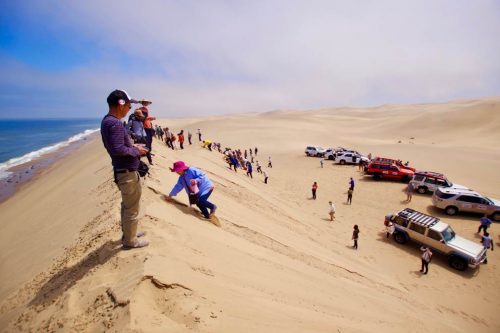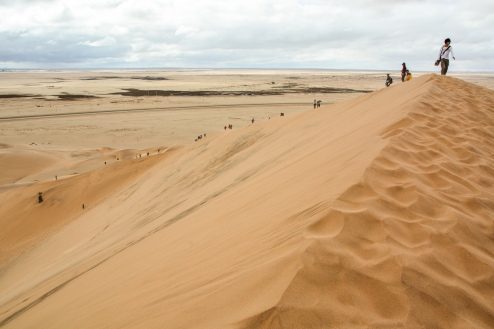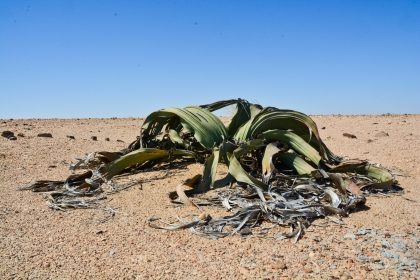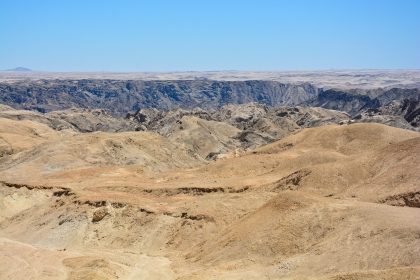나미브 사막으로 : 월비스베이
86th Voyage Report

아프리카 대륙의 기항지, 나미비아의 월비스베이. 이곳에서는 세계에서 가장 오래된 사막, 나미브 사막과 만날 수 있습니다. 나미브란 이곳에 사는 선주민족의 언어로 아무것도 없음을 뜻합니다. 도착한 사막은 그 말대로 아무것도 없는, 오직 광할한 끝없는 사막만이 펼쳐져 있습니다.

거대한 모래언덕. 발이 모래에 빠져 언덕을 오르는 것만으로도 힘에 벅찹니다. 신발도 모래가 가득 들어오지만 생각보다 신경쓰이지는 않습니다. 모래언덕의 정상을 향해 이동합니다.

정상을 향하는 이유는 이곳에서 멋진 풍경이 있기 때문입니다. 사진의 모래언덕에 보이는 사람들의 풍경을 찾아보세요. 언덕이라고 표현했지만, 상상을 뛰어넘는 거대함입니다. 나미브 사막은 2015년 흥행한 영화 매드맥스의 촬영지 이기도 합니다.

전혀 비가 오지 않는 이 건조한 대지에서 살아가는 동식물들이 있습니다. 월위치아라고 하는 이 식물은 최대 2천년의 수령을 가진 것도 있습니다. 사진의 식물은 약 500세 정도. 현지의 가이드에 따르면 여기서 다시 70km 정도 가면 1,500세의 웰위치아도 있다고. 그 숫자의 스케일이 그저 놀라울 뿐입니다.

사진은 문 랜드 스케이프라는 곳입니다. 그 이름처럼 달에 있는 듯한 신비한 세계가 펼쳐집니다. 과거 영화 혹성탈출(1968년)의 촬영지기도 한 이 곳은 지구에서 가장 지구처럼 느껴지지 않는 곳이라는 별칭도 가지고 있습니다.
